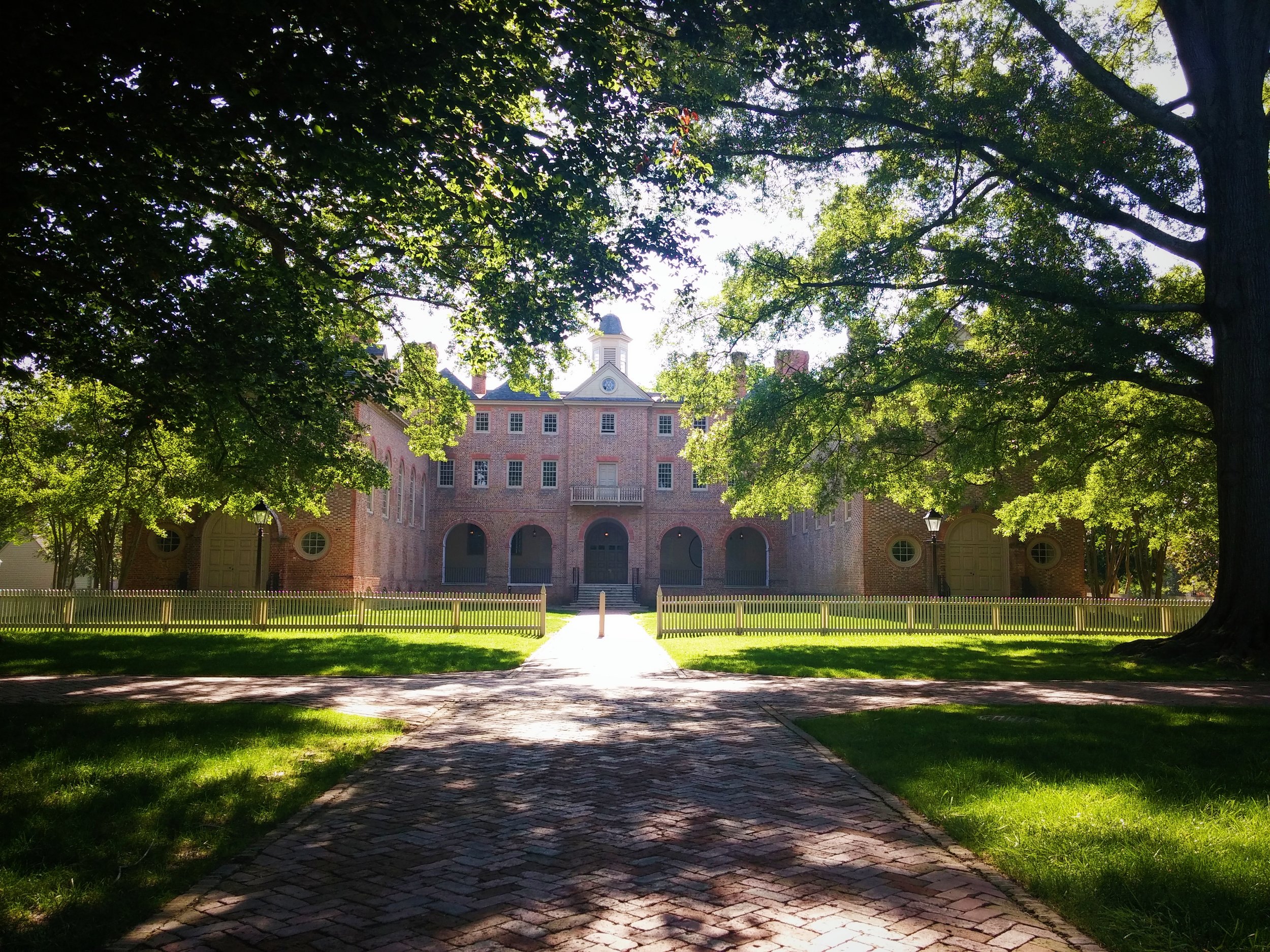Six people brutally murdered, two missing, three years. Was this the work of a serial killer?
By: Maddie Rowley
Williamsburg, Virginia is an idyllic town—think cobblestoned streets, colonial reenactors in white wigs and pantaloons belting out famous speeches on the steps of colonial-style brick buildings, quaint restaurants, English gardens, and The College of William & Mary, chartered in 1693 by King William and Queen Mary of England. It’s a slightly comical clash of modern day meets 300 years ago.
In short, the place is old, like, really old but charming and unique. It’s particularly special to me because I graduated from William & Mary and loved all the oddities that came with the place and its people—but during my time there no one really ever talked about the area’s past and the possible danger that still existed. It was almost like a Boogeyman rumor, something that happened but was swept under the rug like a secret.
“Don’t get caught on the Colonial Parkway at night,” people would say, “there’s a murderer on the loose.” That’s all I ever heard about the Colonial Parkway Murders, and I never dug deeper because, well, college.
The Colonial Parkway is beautiful. It’s a narrow, 23-mile long pebbly textured road that links Virginia’s Historic Triangle—Jamestown, Yorktown, and Williamsburg, and is part of the National Park Service’s Colonial National Historical Park. In the springtime before classes let out, my friends and I would hop into my old Jeep and drive down the Colonial Parkway’s windy tree-lined road to get some sun at Yorktown beach, a little sandy patch of land on the York River.
But the road itself has a dark past. Between 1986 and 1989, six people were murdered and two people went missing along the parkway. The killer(s) has never been found.
This case is tough to unravel—there are lots of confusing details that don’t make sense when it comes to the killer’s methods and the types of people he was targeting (presumed “couples” parked in known lovers’ lanes or overlooks that dotted the Colonial Parkway and throughout the area).
I spoke to Bill Thomas, brother of the killer’s first victim, Cathy Thomas, about the case and new developments that have come to light in the last few years.
Bill’s passion for finding the killer is apparent. Over email, he said he’s given dozens of interviews, been on several podcasts, and even went to this year’s CrimeCon and was shadowed by a Washington Post reporter.
On the phone, he launched into the case’s timeline without hesitation, going into detail about how his sister was found and how over the years, he’s become the unofficial spokesperson for all the victims’ families.
“The case starts with the murder of my younger sister Cathy Thomas and her girlfriend, Rebecca Dowski in October of 1986,” Thomas said. “Cathy and Becky were strangled with rope and then their throats were cut from beyond ear-to-ear. Cathy was essentially decapitated. Their bodies were then put into my sister’s 1980 Honda Civic. Cathy was squeezed into the hatchback area of the Honda, and Rebecca Dowski’s body was placed on a diagonal in the backseat of this two-door Honda.”
According to Thomas, the couple had only been dating for about six months before they were murdered. Cathy, 27, graduated from the U.S. Naval Academy and had recently retired from the Navy. She was working as a stockbroker in Norfolk when she was introduced to 21-year-old William & Mary student Rebecca Dowski, who was getting ready to graduate with a degree in business in the spring.
The scene of the murders was gruesome. From the way their bodies were placed and where the car itself was found, it looked like the suspect had tried to stage the scene and had even tried to set the car on fire with diesel fuel, which, if the suspect had been knowledgeable enough, would have known that diesel fuel won’t catch fire with a match.
“Who has access to diesel fuel but doesn’t understand the ignition properties of diesel fuel?” said Thomas, who has thought about this case from every angle and mused “it could be something as simple as they grabbed what they thought was a can of gas and then they tried to set it on fire and it turned out not to be gas.”
Thomas prompts me about the diesel fuel detail. Who uses it in their daily lives? Possibly people who operate farm equipment, boaters, (there’s a tremendous amount of boating in that area) and truckers, but there are no trucks allowed on the Colonial Parkway.
After the car failed to light, the killer put the Honda in neutral, pushed it over the edge of the overlook’s embankment and it rolled down toward the York River. The killer was likely hoping the car would roll into the water, but instead it got caught in the underbrush. This was now the second thing that hadn’t gone according to the murderer’s plan.
“He probably got lucky here because they believe the incident took place on the night of Thursday, October 9th or early morning Friday, October 10th. The car was far enough down the embankment that you can’t see it from the parkway,” said Thomas.
He thinks that the killer is someone who knew the parkway well and was familiar with its twists and turns, lack of entrances and exits and was someone who knew that the road would be fairly empty in the middle of the night.
Cathy and Rebecca’s case was investigated by the FBI because it took place on federal land. This detail would later play an interesting role, because in the murder cases that followed, different law enforcement agencies would be in charge depending on where the murders took place.
After Cathy and Rebecca’s murder, David Knobling, 20, and Robin Edwards, 14, were discovered dead along the edge of the James River on September 20, 1987. They had been shot to death, and Knobling’s truck was found in the parking lot of Ragged Island Wildlife Refuge in Isle of Wight County. Eerily when the truck was discovered, the windshield wipers were turned on along with the radio. Similar to Cathy and Rebecca’s crime scene, it was like the scene had been staged.
Seven months later on April 10, 1988 Cassandra “Sandy” Hailey, 18 and Keith Call, 20, were reported missing from Christopher Newport University, where they went to college. They disappeared from a party they attended together as a first date, which, according to the couple’s friends, actually didn’t go so well. Keith’s Toyota Celica was found abandoned at the York River Overlook a little over two miles from where Cathy and Rebecca were found along the Colonial Parkway. Sandy and Keith’s remains have never been found. They seemingly vanished into thin air.
Almost a year and a half later on September 5, 1989 a gold 1972 Chevrolet Nova was found abandoned at a rest stop off I-64 in New Kent County. The car belonged to Daniel Lauer, age 21, who was on the way back to Virginia Beach with his brother’s girlfriend, Annamaria Phelps, 18. Lauer was planning on moving in with Annamaria and his brother, Clint, and had gone home to pick up his clothing and other items while Annamaria visited with her family before heading back to Virginia Beach.
Strangely, Daniel’s car was found at the opposite rest stop facing the wrong direction instead of the rest stop that was on the way to their final destination—the car had likely been moved. About six weeks later, Daniel and Annamaria’s skeletonized remains were found down a remote logging road about one mile from the rest stop covered in a blanket from Daniel’s car. There had been a deluge of rain in between the time they disappeared and the time they were found. The rain plus the added humidity meant their bodies had decomposed quickly and evidence was hard to come by at the scene.
Each case brings about significant questions and involves intricate details, and these details lead back to a question that’s been on everyone’s mind for years. Was this the work of one serial killer? Or were these murders committed by different people? Thomas and and FBI believe it to be the work of a serial killer due to the behavioral similarities when it comes to the crime scenes.
The differences in each case, though, must be noted, and not to mention the lack of forensic evidence linking each murder.
“These murders are often linked but in January of 2010 in a face-to-face meeting with the FBI, we asked if there was anything in the forensics that links the four double homicides in the Colonial Parkway murders and the answer at that time was that nothing in the forensics actually links these cases,” Thomas said.
Other stark differences include the murderer’s method of killing (Cathy Thomas and Rebecca Dowski were strangled and then their throats were slit with a follow-up attempt to set them on fire, David Knobling and Robin Edwards were shot as they tried to run away from the killer, Sandy Hailey and Keith Call were never found, and based on a few nicks on Annamaria Phelps’ finger bones, it’s possible that her and Daniel Lauer were stabbed, but difficult to know for sure), the mechanics of what took place with each murder also vary.
But similarities also abound.
“You’ve got couples, (even though the majority of the couples besides Cathy and Rebecca weren’t dating per se), cars, lover’s lanes, isolated rural locations, no robberies, no apparent sexual assaults, limited signs of struggle. There’s also a pattern where the cars appear to be moved post-mortem. Many of the law enforcement officers think the cars appear to be staged,” said Thomas.
The current theory from experts who believe the homicides are related think that the killer presented himself as an authority figure, like a police officer or a National Park Ranger, or some sort of law enforcement official.
“It’s likely that the killer approaches the vehicle in a non-threatening manner and then probably uses a gun to establish control and then transitions to a knife as a preferred method of killing,” said Thomas.
When law enforcement was working to solve the cases, DNA, CODUS, and familial DNA unfortunately weren’t investigative techniques at the time.
“Crime scenes were handled differently back then,” said Thomas. “They weren’t worried about cross-contamination, investigator DNA... they were doing fingerprints and tire prints and hair, and fibers, but they weren’t doing DNA testing back then and they weren’t securing crime scenes in the same way.”
The latest news in the case according to Thomas? Three of the four Colonial Parkway murders’ families have been told by the FBI and Virginia State Police that there is potential perpetrator DNA in three of the four crime scenes, but they haven’t told the families if the DNA links each crime scene yet. Law enforcement has also asked for familial DNA from the families and the first responders who worked the scenes of the crimes in order to eliminate any of their DNA.
“The potential exists to do forensic genealogy and it’s something we’re pushing for,” said Thomas. But so far the FBI and Virginia State Police haven’t let on as to the amount of DNA they have to test.
“We’ll be at 33 years this October, and I’ve heard that my sister’s case is a cold case any number of times...but experts have told me this is a solvable case,” said Thomas. “No one’s been standing in line longer than our families.”
Thomas recently signed a television deal with FBI profiler brothers Jim and Tim Clemente to air on the Oxygen channel in the spring of 2020 and is also working on a book about the unsolved Colonial Parkway Murders.
If you’d like to keep up with the case, Bill Thomas started a Facebook group where he frequently posts updates and article links.
Bill Thomas, brother of Colonial Parkway murder victim Cathy Thomas.






